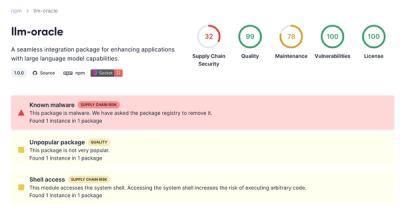gatsby-source-mongodb
Source plugin for pulling data into Gatsby from MongoDB collections.
How to use
module.exports = {
plugins: [
{
resolve: `gatsby-source-mongodb`,
options: { dbName: `local`, collection: `documents` },
},
],
}
multiple collections
module.exports = {
plugins: [
{
resolve: `gatsby-source-mongodb`,
options: { dbName: `local`, collection: [`documents`, `vehicles`] },
},
],
}
Plugin options
- connectionString: if you need to use a connection string compatable with later versions of MongoDB, or for connections to MongoDB Atlas, you can enter the entire string, minus the
dbName and extraParams. Use the In this case, the authentication information should already be embedded in the string ex. mongodb+srv://<USERNAME>:<PASSWORD>@<SERVERNANE>-fsokc.mongodb.net. Pass dbName and extraParams as options per below. - dbName: indicates the database name that you want to use
- collection: the collection name within Mongodb, this can also be an array
for multiple collections
- server: contains the server info, with sub properties address and port ex.
server: { address:
ds143532.mlab.com, port: 43532 }. Defaults to a server
running locally on the default port. - auth: the authentication data to login a Mongodb collection, with sub
properties user and password. ex. auth: { user:
admin, password: 12345 } - extraParams: useful to set additional parameters for the connection, like authSource, ssl or replicaSet
(needed for connecting to MongoDB Atlas db as a service), ex: extraParams: { replicaSet:
test-shard-0, ssl: true, authSource: admin }. These are the types of options that can be appended as query parameters to the connection URI: https://docs.mongodb.com/manual/reference/connection-string/#connections-connection-options - clientOptions: for setting options on the creation of a
MongoClient instance. By default to handle the various connection URI's necessary for newer versions of MongoDB Atlas, for instance, we pass { useNewUrlParser: true }. You can override the default by passing either an empty object literal or filled with other valid connection options. All options specified in the MongoClient documentation are valid for usage. - preserveObjectIds: for preserving nested ObjectIDs within documents, set this to the Boolean
true, ex: preserveObjectIds: true.
Mapping mediatype feature
Gatsby supports transformer plugins that know how to transform one data type to
another e.g. markdown to html. In the plugin options you can setup "mappings"
for fields in your collections. You can tell Gatsby that a certain field is a
given media type and with the correct transformer plugins installed, your data
will be transformed automatically.
Let's say we have a markdown field named body in our mongoDB collection
documents. We want to author our content in markdown but want to transform the
markdown to HTML for including in our React components.
To do this, we modify the plugin configuration in gatsby-config.js like
follows:
module.exports = {
plugins: [
{
resolve: `gatsby-source-mongodb`,
options: {
dbName: `local`,
collection: `documents`
map: {
{documents: {body: `text/markdown`}
},
},
}
],
}
The GraphQL query to get the transformed markdown would look something like
this.
query($id: String!) {
mongodbCloudDocuments(id: { eq: $id }) {
id
name
url
body {
childMarkdownRemark {
id
html
}
}
}
}
How to query your MongoDB data using GraphQL
Below is a sample query for fetching all MongoDB document nodes from a db named
'Cloud' and a collection named 'documents'.
query {
allMongodbCloudDocuments {
edges {
node {
id
url
name
}
}
}
}



